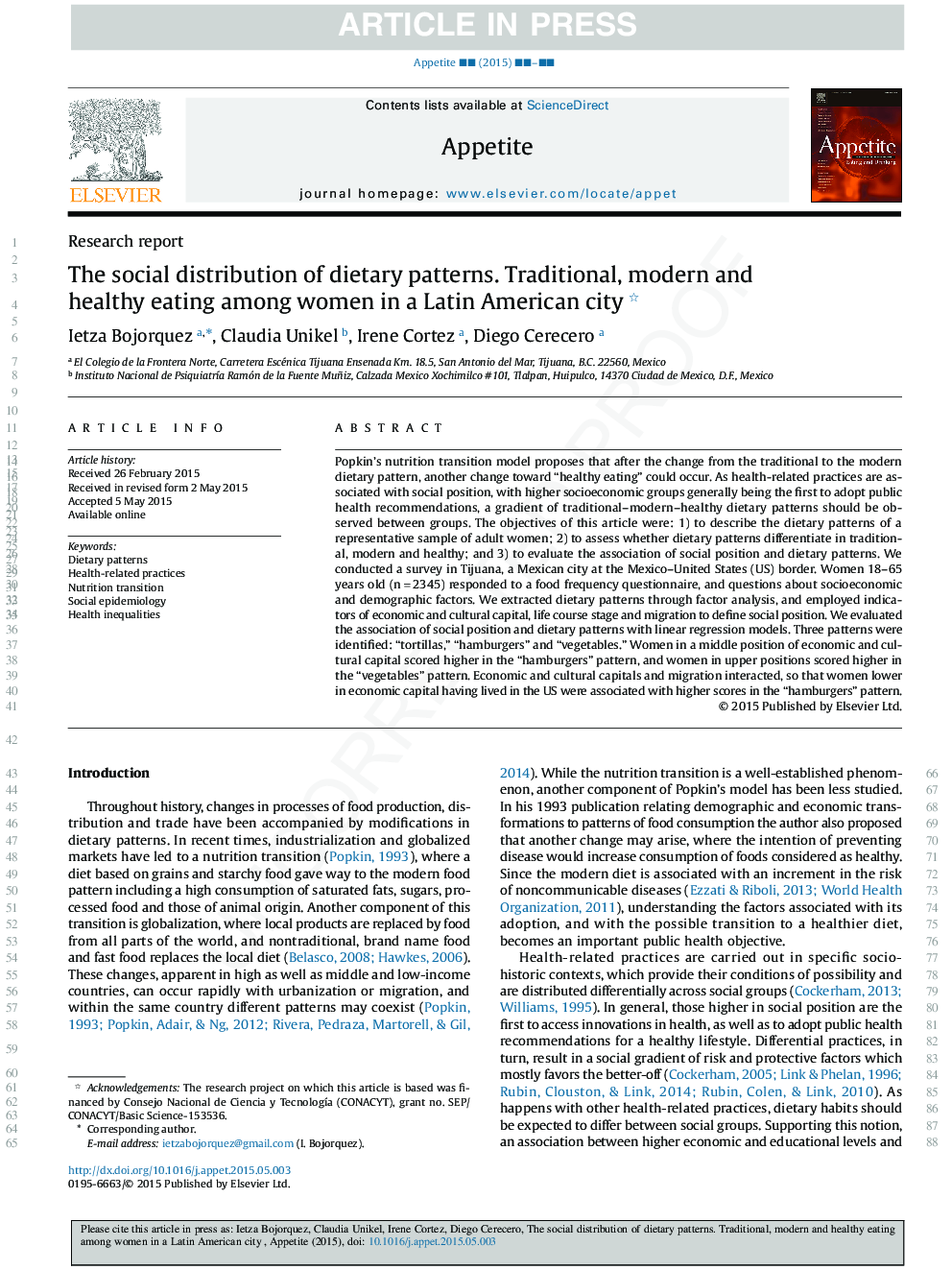| کد مقاله | کد نشریه | سال انتشار | مقاله انگلیسی | نسخه تمام متن |
|---|---|---|---|---|
| 7308340 | 1475388 | 2015 | 8 صفحه PDF | دانلود رایگان |
عنوان انگلیسی مقاله ISI
The social distribution of dietary patterns. Traditional, modern and healthy eating among women in a Latin American city
ترجمه فارسی عنوان
توزیع اجتماعی الگوهای رژیم غذایی. خوردن غذاهای سنتی، مدرن و سالم در میان زنان در یک شهر آمریکای لاتین
دانلود مقاله + سفارش ترجمه
دانلود مقاله ISI انگلیسی
رایگان برای ایرانیان
کلمات کلیدی
الگوهای رژیم غذایی، شیوه های مرتبط با سلامت، انتقال تغذیه، اپیدمیولوژی اجتماعی، نابرابری های بهداشتی،
موضوعات مرتبط
علوم زیستی و بیوفناوری
علوم کشاورزی و بیولوژیک
دانش تغذیه
چکیده انگلیسی
Popkin's nutrition transition model proposes that after the change from the traditional to the modern dietary pattern, another change toward “healthy eating” could occur. As health-related practices are associated with social position, with higher socioeconomic groups generally being the first to adopt public health recommendations, a gradient of traditional-modern-healthy dietary patterns should be observed between groups. The objectives of this article were: 1) to describe the dietary patterns of a representative sample of adult women; 2) to assess whether dietary patterns differentiate in traditional, modern and healthy; and 3) to evaluate the association of social position and dietary patterns. We conducted a survey in Tijuana, a Mexican city at the Mexico-United States (US) border. Women 18-65 years old (nâ=â2345) responded to a food frequency questionnaire, and questions about socioeconomic and demographic factors. We extracted dietary patterns through factor analysis, and employed indicators of economic and cultural capital, life course stage and migration to define social position. We evaluated the association of social position and dietary patterns with linear regression models. Three patterns were identified: “tortillas,” “hamburgers” and “vegetables.” Women in a middle position of economic and cultural capital scored higher in the “hamburgers” pattern, and women in upper positions scored higher in the “vegetables” pattern. Economic and cultural capitals and migration interacted, so that for women lower in economic capital, having lived in the US was associated with higher scores in the “hamburgers” pattern.
ناشر
Database: Elsevier - ScienceDirect (ساینس دایرکت)
Journal: Appetite - Volume 92, 1 September 2015, Pages 43-50
Journal: Appetite - Volume 92, 1 September 2015, Pages 43-50
نویسندگان
Ietza Bojorquez, Claudia Unikel, Irene Cortez, Diego Cerecero,
